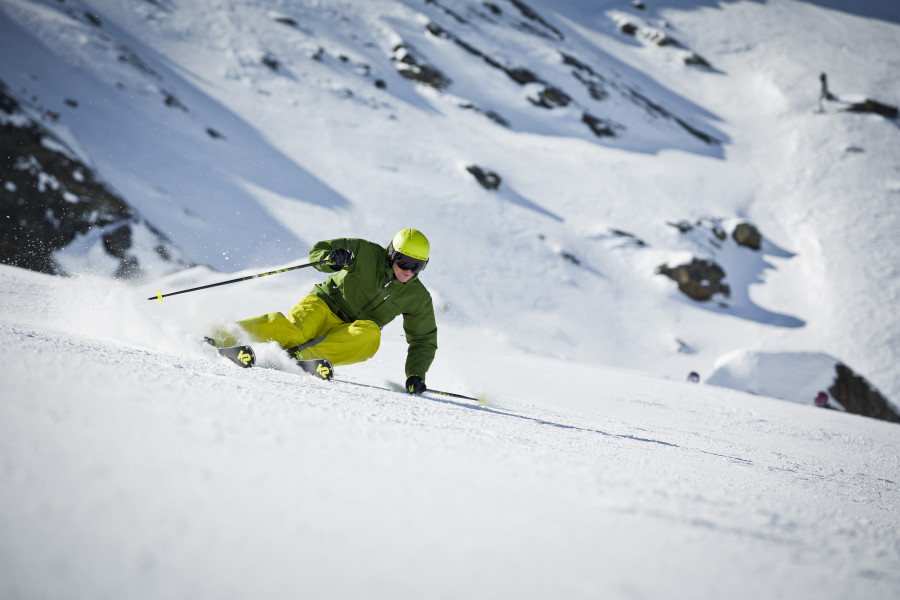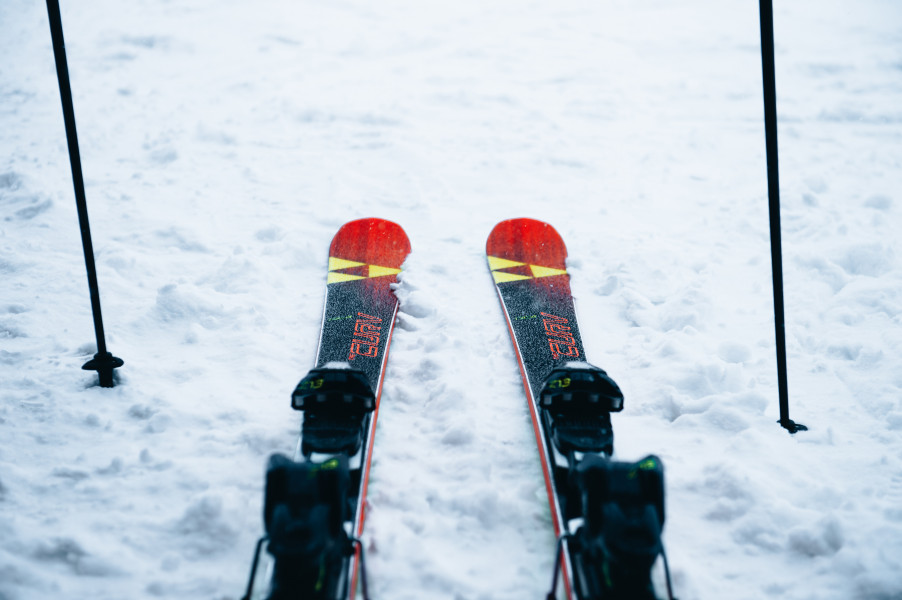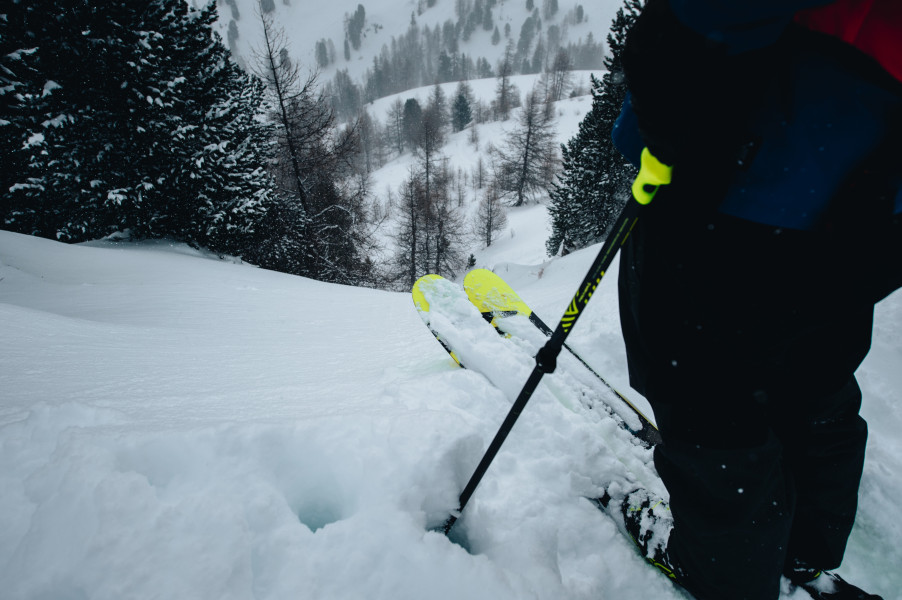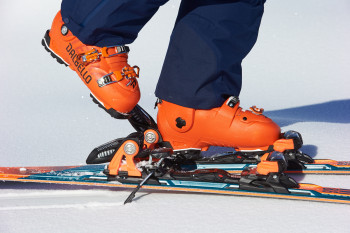Finding a pair of skis with the right length can be quite a challenge. When choosing the right length, you'll need to consider your height, skill level, the type of ski you're looking for and of course your individual preferences regarding terrain and ski style. We've compiled the aspects that are the most important when finding your ideal ski length.
Different types of skis
Nowadays, there are specific types of skis for every imaginable area of use. Every type has its own length guidelines that should be kept in mind. While freestyle, touring or all-mountain skis should be slightly shorter than you, freeride skis should be as tall as you or even taller. All-round skis should end somewhere between your chin and your nose. Slalom Race skis have a good length if they reach your chin, but you'll want to buy a model taller than yourself if you're looking for Giant Slalom skis.
Your individual skill level

Your current abilities in the field of skiing are of course another important aspect to consider. Beginners will want to choose a shorter pair of skis, reaching up to your chin approximately. This greatly reduces the skis' resistance while turning. They shouldn't be too short either, however – very short skis require a neutral body posture that beginners usually haven't developed yet.
Experienced skiers can choose a pair of skis taller than themselves but will generally get along with any kind of length. Here, the choice of length should be made according to personal taste and the type of ski you're looking for.
Terrain type and skiing style
Shorter skis are especially suitable on groomed runs and for quick, short turns. Used here, they offer lower snow resistance and are easily turnable even at lower speeds. Beginners and unexercised or slow skiers will prefer shorter models. Those who generally make shorter turns when skiing could enjoy them too though, even if they're already more experienced at skiing.
However, advanced skiers usually choose longer skis since they offer a better stability at high levels of speed. Due to their longer edge length they are harder to turn, but better suited for long turns. Since their contact surface is larger, they offer an advantage in deep and frequented snow.
Your height
A skiers height should also be taken into consideration, but only after examining the other two aspects. While body weight plays no decisive role in the choice of ski length, it becomes important when setting the skis' binding. How to adjust your binding correctly, you can find out with the help of our DIN Setting Calculator.
The right ski length for every ski type
| Ski type | Skill level | Area of use | Ski length |
|---|---|---|---|
| All-round ski |
|
| body height minus ~ 5 – 10 centimeters |
| All-mountain ski | Advanced and (very) good skiers |
| body height plus/minus ~ 5 centimeters |
| Racing ski | Advanced and (very) good skiers |
| Slalom: body height minus ~ 10 - 15 centimeters |
| Freestyle ski | From beginners up to (very) advanced skiers |
| body height plus/minus ~ 5 - 10 centimeters |
| Freeride ski | Good and very good skiers |
| body height plus ~ 5 - 15 centimeters |
| Touring ski | From intermediate up to (very) good skiers |
| body height minus ~ 5 - 15 centimeters |
Note: There is no general rule when it comes to ski length. The figures shown in the table above are meant for orientation that can help you make your decision.




